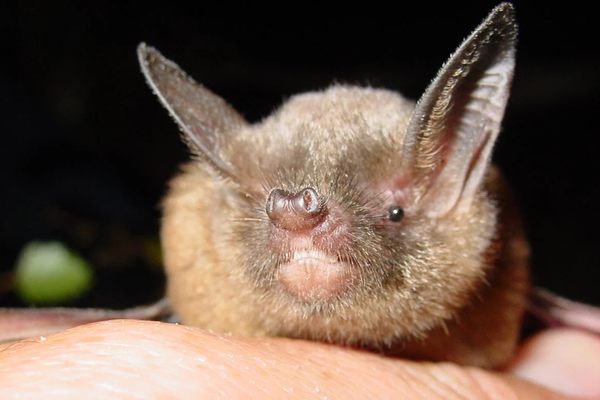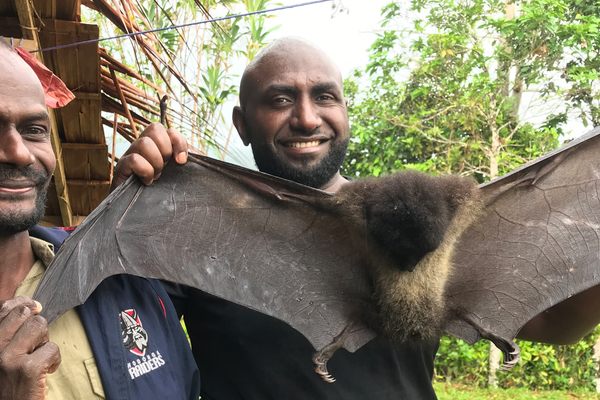These Bats Don’t Let Scorpion Stings Get in the Way of a Tasty Meal
Their immunity to venom could lead to new treatments for pain.

The Arizona bark scorpion may be just a few inches long, but it is the most venomous scorpion species in North America. Despite the bark scorpion’s potent sting (it isn’t fatal to most humans but causes intense pain), it’s still a snack for some birds, snakes, and grasshopper mice. Grasshopper mice, for example, are immune to the venom, and scientists have suspected the pallid bat, another scorpion predator, either has similar immunity, or is just really good at dodging the scorpion’s stinger. A new study shows they’re not nimble—ground-hunting bats rarely are—but is instead unfazed by the venom. The underlying molecular mechanism could help medical researchers develop new medications for pain management.
A team of researchers from the University of California, Riverside, first watched high-speed footage of pallid bats feeding on bark scorpions to see if they were being stung at all. Every bat they observed was stung, but this didn’t seem to interrupt their dining. The researchers then injected the bats with doses of the venom. The highest dose they gave is nearly seven times the dose that kills 50 percent of mice, which is a common measure of venom potency. While some of the bats had mild reactions, all were just fine after 10 minutes.

The next step was to sequence the genes behind the bat’s pain receptors. The grasshopper mouse, for example, has receptors trick the venom into binding with a specific spot that actually blocks pain. The pallid bat genes use a different mechanism, however, and the researchers aren’t quite sure yet how it works. They do know that the genes are similar to sequences found in a species of opossum, Tasmanian devils, and platypuses (who are venomous themselves). Researchers hope to unravel the pallid bat pain mystery soon.






















Follow us on Twitter to get the latest on the world's hidden wonders.
Like us on Facebook to get the latest on the world's hidden wonders.
Follow us on Twitter Like us on Facebook